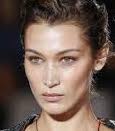The shape of the eyes plays a major role in one’s facial appearance. Improving eye shape has a long history in plastic surgery and historically relates to rejuvenation efforts with surgical removal of excess eyelid skin and fat as well as brow reshaping. Contemporary injections technique using neuromodulators and fillers help create favorable periocular changes for both young and old.
But younger patients today often seek to change the shape of their eyes to appear more beautiful for women and more masculine for men. For women this typically means an elevated outer eye corner that gives the eye shape an upward tilt or outer eye swoop. This typically includes the tail of the eyebrow as well.

Their results showed that patient satisfaction was high with the procedure. The, endoscopic technique proved effective for creating an overall upward sweep to the corner of the eye and the tail of the eyebrow with well-hidden scars. As a result of their clinical experience they have found this approach to lateral eye reshaping to be an effective approach to producing beautiful eyes in young women.
In lateral eye or periocular reshaping (periorbital = bone reshaping, periocular = soft tissue reshaping), raising the corner of the eye and the tail of the eyebrow can be done by several different techniques. Significantly raising the outer corner of the eye usually requires a canthoplasty although they used an ‘endoscopic canthopexy’ to achieve that effect. The temporal browlift can be done by hairline excisional approaches or an endoscopic technique which the authors of this clinical paper have used.
Dr. Barry Eppley
Indianapolis, Indiana


